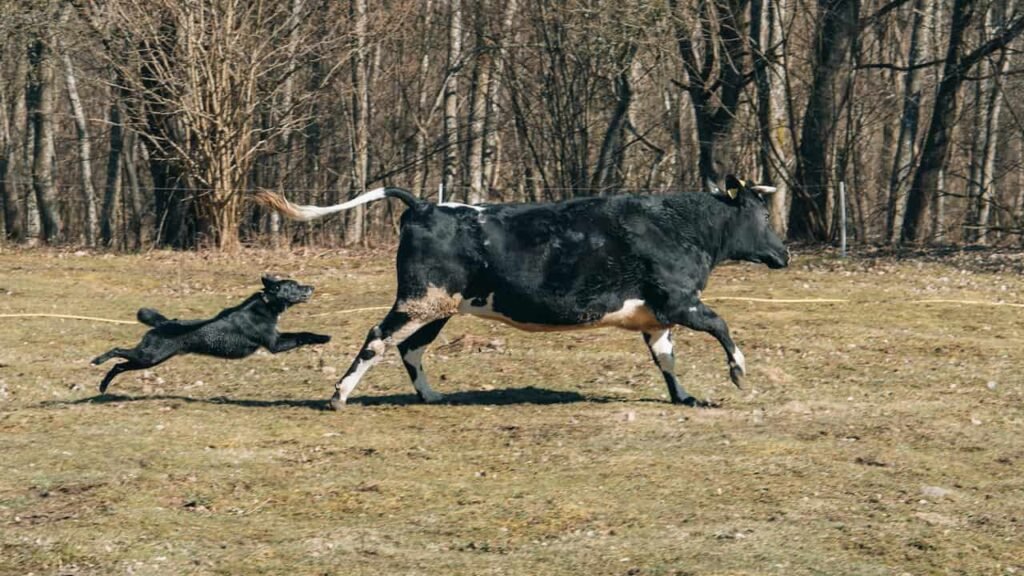Dogs have an uncanny ability to make us laugh. Many of your dog’s quirkiest habits aren’t random at all? These behaviors stem from instinctual tendencies, communication methods, and learned responses. Let’s dive deeper into some of the funniest dog habits and explore what they really mean.
The Zoomies
Few things are as entertaining as watching a dog suddenly burst into a frenzied sprint around the house. Known formally as Frenetic Random Activity Periods (FRAPs), zoomies are one of the most universally recognized—and hilarious—dog behaviors.
Zoomies typically occur when a dog has pent-up energy that needs release. This is especially common in puppies and high-energy breeds. The behavior serves as a way for dogs to burn off excess adrenaline.
However, there’s more nuance to this habit than meets the eye. Zoomies can also be triggered by excitement. For example, if your dog greets you enthusiastically after you’ve been away for hours, they might channel that overwhelming emotion into a quick burst of speed.
If your older dog starts exhibiting frequent zoomies, consider whether they’re getting enough physical activity. A bored dog will find creative ways to entertain themselves!
Head Tilting
Head tilting is adorable. It always accompanies a wagging tail.
While part of the appeal lies in its cuteness, head tilting actually serves several practical purposes.
One theory suggests that dogs tilt their heads to adjust the position of their ears. It helps them better locate and interpret sounds. Another explanation is that the tilt allows them to see your face clearly.
Additionally, dogs quickly learn that humans respond positively to this gesture. If you’ve ever rewarded your pup with praise, or laughter after a head tilt, chances are you’ve inadvertently reinforced the behavior.
Over time, your dog associates the tilt with positive attention and repeats it whenever they want to engage with you.
Chasing Their Tail
Watching a dog spin in circles trying to catch their own tail is pure comedy gold. Some pups chase their tails so enthusiastically that it seems like they’re auditioning for a circus act.
Tail-chasing is a playful behavior. However, if the behavior becomes obsessive, it could indicate underlying issues such as anxiety, boredom, and compulsive disorders.
Medical problems should also be considered. Fleas, allergies, and anal gland irritation can cause discomfort near the tail area. This prompts excessive licking.
In rare cases, neurological conditions may contribute to repetitive spinning motions. If your dog frequently chases their tail, consult your veterinarian to rule out potential health concerns.
Burying Treasures
Have you ever discovered your favorite pair of socks buried in the backyard—or hidden under your pillow? This quirky habit, known as caching, dates back to your dog’s wild ancestors.
In the wild, wolves and other canines would bury food to protect it from scavengers. Even though domesticated dogs no longer need to store food, the instinct remains deeply ingrained.
Today, dogs often bury toys, bones as a way of safeguarding them. They can do it simply enjoying the process of digging.
Interestingly, some dogs exhibit this behavior purely for entertainment value. Dachshunds and Beagles tend to love digging and hiding objects. Providing designated areas for digging (like a sandbox) can help redirect this natural impulse.
Scooting Across the Floor
Scooting across the carpet on their rear end might look funny. But this behavior is usually a sign of discomfort rather than playfulness.
Scooting occurs when a dog experiences irritation around their anal glands. When the glands become infected, they can cause itchiness and pain. It prompts your dog to drag their bottom along the ground in an attempt to relieve the sensation.
Other possible causes include worms, skin infections, and allergies. If your dog scoots occasionally, gently clean the area. Proper hygiene may help.
Licking Everything
Some dogs think everything is a fair game for licking. Occasional licks are sweet gestures of affection. Excessive licking indicate a deeper issue.
Dogs lick for various reasons. They lick for grooming, exploring their environment, and seeking attention. Puppies learn early on that licking elicits positive reactions from humans. This reinforces the behavior over time.
Excessive licking signal anxiety. Gastrointestinal upset and hormonal imbalances can also lead to compulsive licking. Pay close attention to context and frequency.
Cocking a Leg on Everything
Whether it’s a tree, a fire hydrant, or your neighbor’s mailbox, male dogs love lifting their leg to mark their territory.
Marking is primarily territorial. It serves as a way for dogs to communicate with other animals. By leaving their scent, they establish boundaries and assert dominance within their environment.
Interestingly, smaller breeds sometimes lift their legs higher to appear larger and intimidating. This is a clever trick passed down through evolution.
Excessive urination targeting specific items in the home could indicate separation anxiety. Training and consistent routines can help manage this behavior.
Howling at Sirens
When an ambulance drives by, does your dog transform into a miniature wolf, howling at the top of their lungs? This ancient behavior connects modern dogs to their wild ancestors.
Howling is a form of long-distance communication among wolves. This was used to locate pack members or warn others of danger. Domesticated dogs retain this trait. Certain high-pitched noises trigger their instinct to respond.
Most dogs don’t realize they’re mimicking their wild cousins. They simply react to the sound out of habit. Unless accompanied by signs of distress, howling is generally harmless. It can even provide insight into your dog’s personality. Huskies and Malamutes are particularly prone to vocalizing due to their ancestry.
Sleeping Belly-Up
Few sights are cuter than a dog sprawled out on their back, legs splayed wide open. This vulnerable sleeping position speaks volumes about trust and comfort.
When a dog sleeps belly-up, they’re signaling complete relaxation and security. It indicates that they feel safe in their surroundings. This posture also helps regulate body temperature.
Not all dogs sleep this way, though. Some prefer curling up tightly, while others stretch out flat on their stomachs. Each sleeping position reflects individual preferences and temperament.
Our furry friends’ funny habits remind us why we love them so much. They’re unpredictable, lovable, and endlessly entertaining. Understanding the meaning behind these behaviors strengthens our connection with them.




